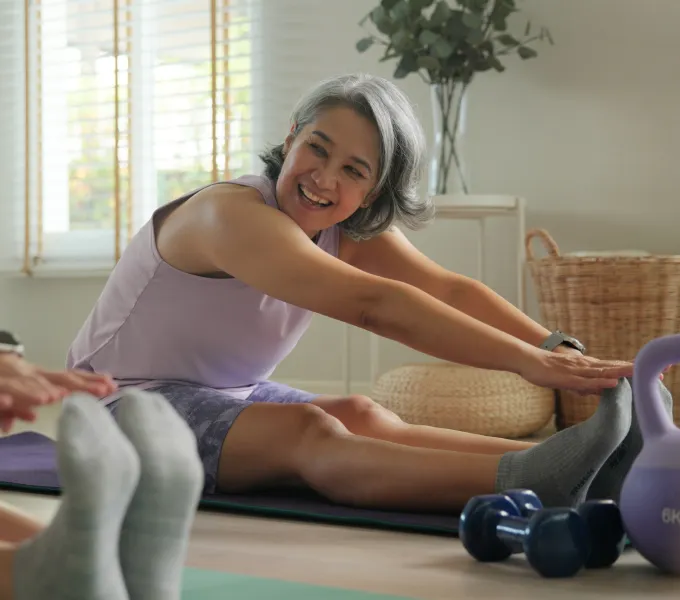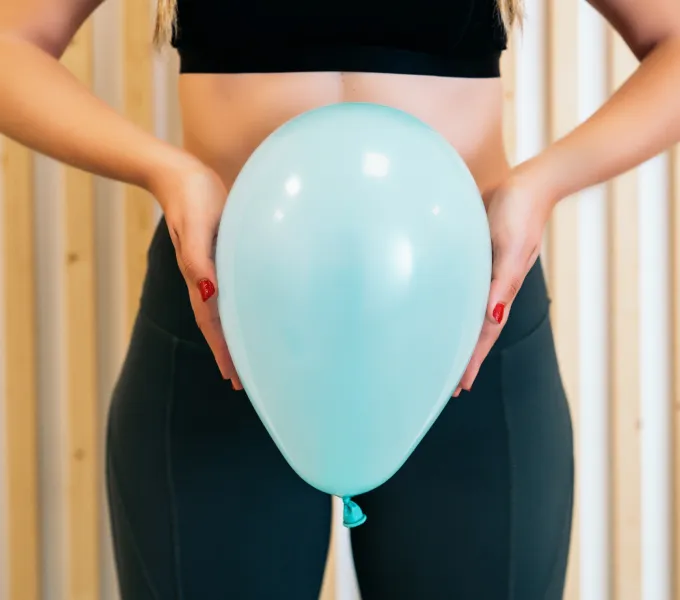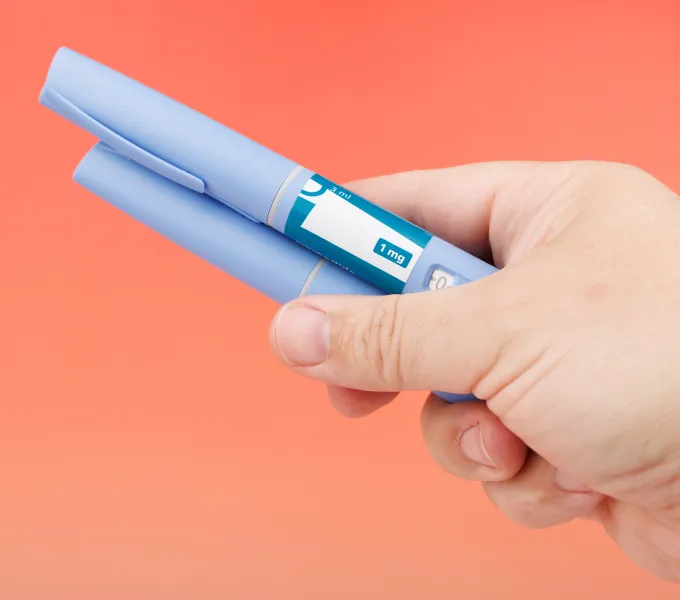
How to Relax Your Pelvic Floor Muscles: Tips & Exercises
When you hear the words "pelvic floor exercise," you probably instantly think of kegels. But when you have pelvic floor muscle tightness (find out the 10 signs to look for), kegels can often make your symptoms worse. More often, it is helpful to focus on exercises that relax your pelvic floor muscles by encouraging movement, blood flow, and calming your nervous system.
Pelvic floor tightness, also known as a hypertonic pelvic floor, occurs when the muscles at the bottom of your pelvis become overactive and essentially get stuck in a contraction. This can lead to poor blood flow and irritated nerves, making movement or touch in the area painful.
There are several reasons why pelvic floor tightness can develop:
- Injury or surgery
- Overuse or habits that create persistent tension
- Stress response
- Medical conditions
Understanding these causes can help you recognize why relaxation exercises, rather than further tightening through kegels, are crucial for addressing pelvic floor muscle tightness and all of the symptoms that go with it.
Why should I relax my pelvic floor?
First we want to acknowledge that the term "relax" can sometimes be frustrating to hear — especially when it comes to your pelvic floor. And we know that "relaxing your pelvic floor" is much easier said than done. We use this term for simplicity, but the goal isn't just to relax, rather it’s to retrain your muscles to move and coordinate through their full range of motion after they developed tension from things like overuse, trauma, or chronic stress.
Relaxing your pelvic floor muscles is just as important as strengthening them for keeping your pelvic floor as healthy as possible. This process involves releasing tension and creating length where needed. Here's why it's essential:
- Physiological Benefits: When you relax your pelvic floor muscles, you allow for better blood flow in and out of the area. This increased circulation helps your muscles to work better and improves their overall health. Plus, relaxed muscles offer greater flexibility and range of motion, which is important for proper pelvic floor function.
- Functional Improvements: Relaxed pelvic floor muscles are stronger and more functional. By allowing your muscles to move through their full range of motion, you're giving them more space to contract when needed. This helps your muscles to be more energy efficient — and more importantly — they have less pain.
- Sensations and Awareness: As you learn to relax your pelvic floor, you may experience a feeling of looseness or softness, reduced tension, or a sense of warmth or heaviness in your muscles. This increased awareness can help you better understand and control your pelvic floor muscles.
4 ways relax your pelvic floor muscles
Relaxing your muscles is a skill that takes practice and patience. It's not about forcing relaxation, but rather taking steps to retrain your muscles to work better than before. With time and consistent effort, you can have a more balanced and healthy pelvic floor. Try these 4 strategies.
1. Relax your nervous system
Whether it feels that way or not, muscle tension is a sign of stress in your body. Take your pelvic floor muscles from "fight or flight" to a state of calm by starting with your nervous system.
These practices not only provide immediate relief from anxiety and tension but also contribute to long-term benefits like improved mood, better digestion, and enhanced cognitive function.
You can try grounding exercises or vagus nerve stimulation to calm your entire body. Here are two helpful exercises to help get you started.
Diaphragmatic Breathing
Your diaphragm and pelvic floor muscles are naturally coordinated. Use this deep breathing exercise to encourage movement and flexibility in your pelvic floor, while easing pain by soothing your nervous system.
Lie flat on your back in a comfortable position:
- Place your hands beneath your ribs or on your belly.
- Inhale, feeling your abdomen expand outward and into your hands, pelvis and back as your lungs fill with air. Tip: With each inhale, imagine your pelvic floor lengthening like the bottom of a balloon as it inflates with air.
- Exhale, allowing your belly to gently recoil back towards your spine.
- Repeat.
Child’s Pose
Release your entire spine from your neck, to your tailbone. Your pelvic floor will thank you!
Start on your hands and knees with your hands under your shoulders and knees under your hips:
- Separate your knees so that they are slightly wider than hip distance apart.
- Sit back onto your heels and stretch your arms out in front of you.
- Hold this position and breathe, feeling your belly expand as you inhale, and relax inward toward your spine as you exhale. Tip: As you relax fully, you may feel a stretch in your groin, hips, back, and pelvic floor.
2. Relax tight muscles around the pelvic floor
Sometimes pain and tightness in the muscles that surround your pelvic floor muscles can be a gatekeeper to your pelvic floor muscle relaxation efforts.
Activate your parasympathetic nervous system with this guided pelvic floor relaxation. It can help to promote relaxation and a mind-body connection that will really help increase your pelvic floor muscle awareness and better control your pelvic floor muscles.
Here are two exercises that can also help.
Reclined Butterfly Stretch
It can be helpful to encourage blood flow to muscles surrounding the pelvic floor. Try this inner thigh release.
Begin lying on your back with your knees bent and feet flat on the floor:
- Place the soles of your feet together and allow your knees to fall away from each other and towards the floor until you feel a stretch in your inner thighs. Tip: Try not to allow your lower back to arch away during this stretch.
- Hold this position and breathe. Tip: Place pillows beneath your knees so that your inner thigh muscles can fully relax.
Low Back Rotation with Stability Ball
Try this exercise to release muscles in your back, abdomen, and hips.
Lie on your back with both knees bent to a 90 degree angle and your feet resting on top of a stability ball:
- Extend your arms out the sides forming a "T' position on the ground.
- Keeping your knees together, roll your legs to one side, feeling your pelvis and spine twist towards that side. Tip: Keep your shoulders in contact with the ground throughout the exercise.
- Engage your lower abdominal muscles, pulling your belly button in towards your spine, then slowly return your legs to the starting position. Tip: Exhale as you bring your legs back to the starting position to avoid breath holding.
- Repeat towards the other direction.
3. Now, relax pelvic floor muscles
Once you’re ready for it, focusing on your pelvic area directly is one of the most important things you can do for your pelvic floor muscles and the other tissues and nerves in your vulvar area.
Some people find success with using vaginal dilators to gradually retrain the pelvic floor muscles to lengthen without pain. Others find this internal vaginal massage very empowering.
Sometimes, pelvic floor tension lingers because of scar tissue after a vaginal tear or episiotomy from child birth. Try this pelvic floor scar tissue release.
Pelvic Floor Release on Stability Ball
Gently release muscle tension and soften scar tissue with this exercise.
Note: Have a scar from a perineal tear? Only consider this exercise after your scar has fully healed and you have been cleared by your healthcare provider for scar massage. This exercise should never be painful!
Sit on a stability ball with both feet planted on the ground in a wide stance. Place a small massage ball or rolled washcloth between your perineum and the stability ball (your perineum is the space between your vaginal and anal opening).
- Begin making slow hip circles on the stability ball, feeling the massage ball or wash cloth gently massage the perineum with this motion.
- Take deep breaths and relax the pelvic floor while performing the circles.
4. See a pelvic floor physical therapist
The bowel, bladder and sexual symptoms that are common in those with pelvic floor muscle tightness can occur for a number of reasons so it’s always important to rule out any new or persistent symptoms with your healthcare provider first.
But even if your symptoms aren’t caused by a medical condition, pelvic pain is complex. While the above strategies are certainly helpful for some, a lot of the time seeing a pelvic floor physical therapist is key to helping to work through your symptoms. They will be able to examine your entire body, evaluate your pelvic floor muscles, and use clues from your medical history to put together a comprehensive plan to help you relax your pelvic floor muscles. You may even use the strategies mentioned above.
Start by scheduling an appointment with one of our pelvic health physical therapists. They are experts in pelvic floor health, and whether in person or virtually in the comfort of your own home, they will help you master relaxation of your pelvic floor muscles.




